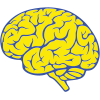REM Sleep Behavior Disorder
Overview. Rapid eye movement (REM) sleep behavior disorder is a sleep disorder in which you physically act out vivid, often unpleasant dreams with vocal sounds and sudden, often violent arm and leg movements during REM sleep — sometimes called dream-enacting behavior.
Cluster Number:
Wiki Number: PW185
Diagnosis: Rapid Eye-Movement Sleep Behavior Disorder
US Patients: 5-13% of those aged 60-99;Of those suffering, 33-65% have injured themselves or a bed-partner.
World Patients: Most people with this diagnosis will develop synucleinopathy (proteins clumping up) leading to Parkinson’s/Lewy-Body Dementia.
Sex Ratio: M+;W
Age Onset: 50’s & 60’s
Brain Area: neurodegenerative disorder; pontomedullary brainstem and/or caudal brainstem have lesions and may lead to synucleinopathy
Symptoms: while still sleeping, people act out their dreams; may injure their bed-partner through punching, flailing, running, etc.;
Progression: This condition has also been diagnosed in animals, spefically dogs.
Causes: Parkinson’s, Lewy Body Dementia and similar conditions often do this; muscle weakness or paralysis may be a factor
Medications: melotonin and clonazepam; some other medications may worsen this.
Therapies: placing cushions around the bed or moving the mattress to the floor; keeping a normal sleep schedule, avoding alcohol, etc
Youtube Video: Rem Sleep Behavior Disorder
Amazon or Library Book: Paradox Lost:
Midnight on the Battleground of Sleep and Dreams
Violent Moving Nightmares-REM Sleep Behavior Disorders
Click the book to link or order from Amazon.

